Digital Multimeters
A digital multimeter (DMM) is a must-have tool for electricians and technicians. It measures voltage, resistance, and current, with some offering True RMS for accurate readings on non-standard currents. These versatile tools help diagnose electrical problems and ensure equipment runs smoothly. Plus, some multimeters measure temperature, ideal for HVAC work.
Find out more about Digital Multimeters below.
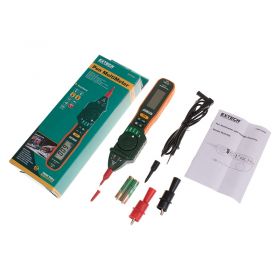
- Pen style – easily fits in your pocket
- Performs six measuring functions
- Suits a whole range of uses
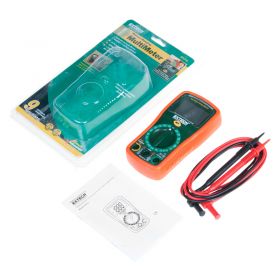
- Measure AC/DC voltage, AC/DC current, resistance and continuity/diode
- Built-in voltage detector
- Ideal for basic electrical applications
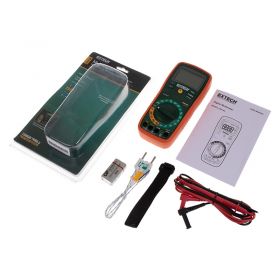
- Entry-level meter in Extech's EX400 series - ideal for all basic measurements
- Measures AC/DC voltage and current, resistance, diode, continuity and temperature
- Large-size, backlit LCD display
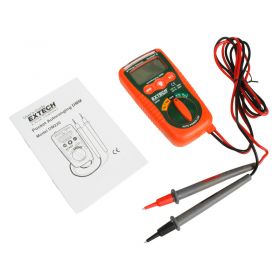
- Built in non-contact voltage detector and torch
- Pocket-sized design
- Test voltage, current, resistance, frequency, capacitance and more
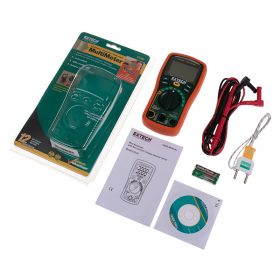
- 12 functions in one tool - measure voltage, current, resistance, capacitance, temperature and more
- Built-in non-contact AC voltage detector with red LED and audible warnings
- Measure hands-free with the built-in tilt stand
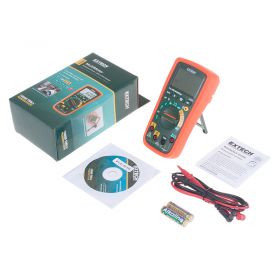
- High accuracy, true RMS handheld digital multimeter
- Measure voltage, capacitance, current, diode, resistance and more
- Data hold and MAX/MIN functions
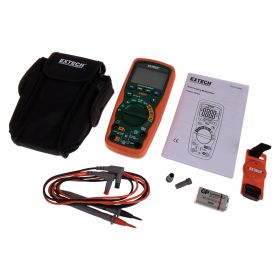
- Double moulded casing for water protection
- 10 measuring functions
- Handy accessories included
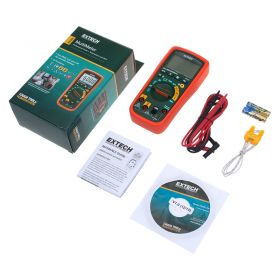
- True RMS accuracy when testing AC
- Tests voltage, current, resistance, temperature, continuity, diode and more
- Built-in non-contact voltage detector
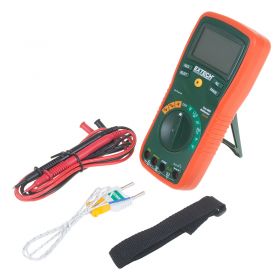
- 11 functions in one!
- Measure AC/DC voltage, AC/DC current, capacitance, duty cycle and much more
- True RMS ensures reliable, accurate results
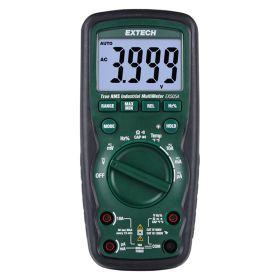
- CAT IV-600 V electrical safety rating
- Double-moulded test leads included
- Waterproof and dustproof (IP67-rating)
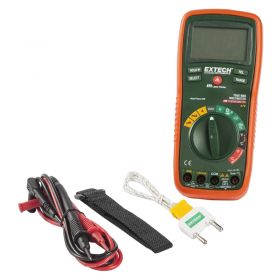
- Highest-spec digital multimeter in the EX400 series
- Built-in infrared thermometer
- 12 different measurement functions
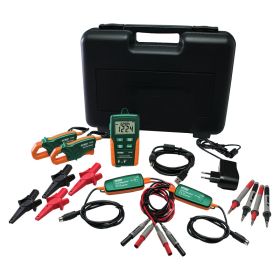
- Datalogger stores up to 256,000 readings
- Alligator clips and test leads included
- Comes with Windows software for analysing results
About Digital Multimeters
While traditional multimeters have used analogue displays which involved a needle moving across a scale, they're generally waning in popularity compared to digital multimeters (DMM).
Digital multimeters offer several advantages over their analogue counterparts. They're generally much more varied in the number of different parameters they can measure, have built-in advanced features and generate numerical value results which are much more accurate than tracking parameter fluctuations on an analogue scale.
The most basic digital multimeters generally are used for measuring voltage, current, and resistance levels. Upgraded DMMs often contain additional measurement capabilities, and can be used to test such things as temperature or capacitance. Electrical professionals often find their multimeter is the one tool they turn to the most, simply because of the versatility of the device and its ability to be used in a wide variety of different electrical applications.
Most digital variety multimeters are also encased in incredibly small bodies - many of them are even pocket-sized, and can still be used for carrying out measurements of electrical and other properties. They're also generally brimming with advanced features such as autoranging, data hold, and MAX/MIN measurements.
Autoranging digital multimeters are much safer than manual ranging devices. Each multimeter - depending on the make and model - will have an integrated range built into the device. This means that the DMM is capable of measuring up to the upper threshold of that range, but once a manual ranging multimeter passes this threshold, it will display 'OL', which means it has exceeded its capabilities. Autoranging multimeters are made to automatically adjust their range to the targeted application, and even when they move outside a range they will automatically adjust themselves to make sure that the user still gets a numerical reading. It is important to consider exactly whether an autoranging or manual ranging device applies to your needs when buying a multimeter - manual ranging multimeters may not have the ability to adjust their range automatically, but they are more efficient at stopping ghost voltage readings.
A common DMM generally consists of an LCD screen encased into a tester that features a rotary dial on the front. Users use this rotary dial to select between different test procedures and features, and the results are relayed automatically to the LCD screen when taken. Using either internal data storage or a data hold mode it's possible to either permanently store this data (and download it later to a PC using various connections) or hold data on screen temporarily while it is jotted down or shown to someone else. Most digital multimeters also feature ports for test leads, and many also ship as standard which is applicable to test leads for carrying out the tests that a particular digital multimeter can perform.


